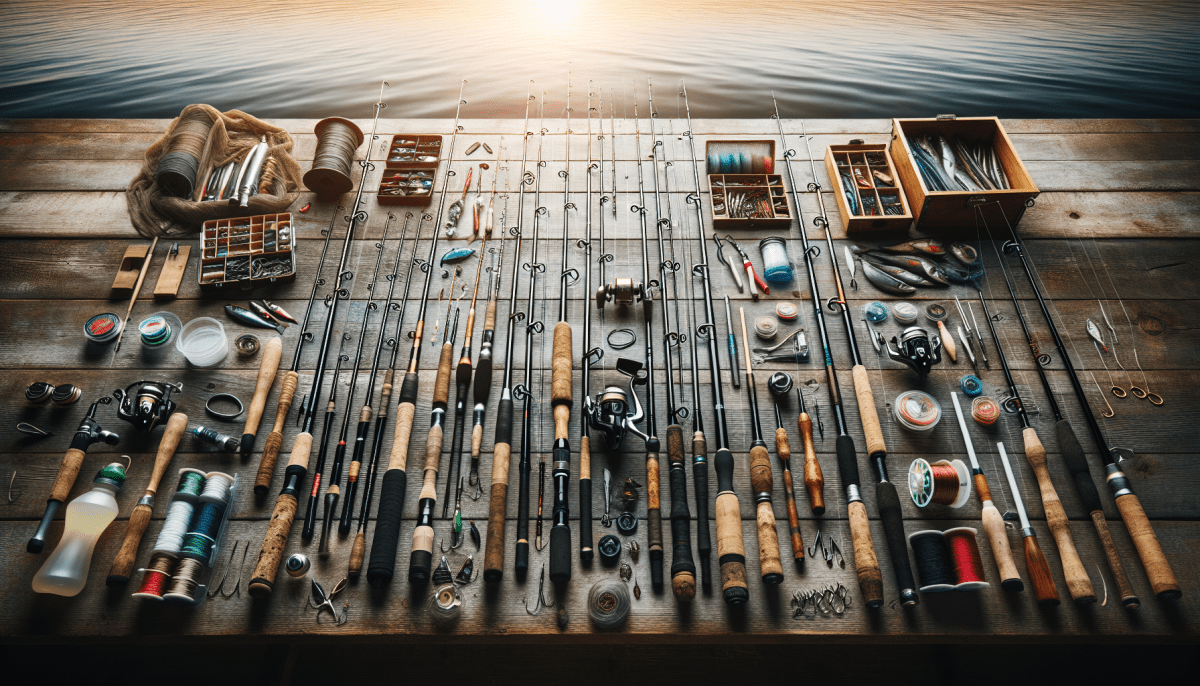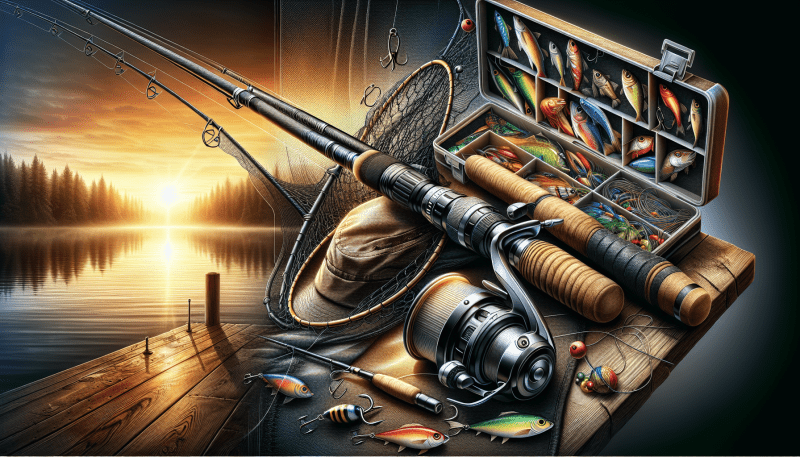When it comes to fishing, choosing the right rod can make a significant difference in your experience and success on the water. There are various types of fishing rods, each designed for specific fishing techniques, species, and environments. Understanding these different types can help you make an informed decision and enhance your fishing adventures.
Spinning Rods are among the most popular and versatile options for anglers. They are typically lightweight and easy to handle, making them ideal for beginners. Spinning rods pair well with spinning reels, allowing for smooth casting and retrieval. These rods are perfect for catching a variety of freshwater and saltwater species, such as bass, trout, and panfish.
Baitcasting Rods, on the other hand, are suited for more experienced anglers. They are designed for use with baitcasting reels, which offer better control and accuracy in casting. Baitcasting rods are typically stronger and can handle heavier lines and lures, making them a great choice for targeting larger fish like pike and catfish. However, they require a bit more skill to master, especially when it comes to avoiding backlash during casting.
Fly Rods are specialized rods designed for fly fishing. These rods are longer and more flexible, allowing for delicate presentations of lightweight flies. Fly fishing is an art that involves casting a nearly weightless lure, and fly rods come in various weights and lengths to match different types of fishing scenarios. Whether you're targeting trout in a mountain stream or saltwater species like bonefish, there's a fly rod tailored for the job.
Choosing the Right Length for Your Needs
When it comes to choosing the right fishing rod, the length is a crucial factor that can significantly impact your fishing experience. Fishing rods come in various lengths, typically ranging from 5 to 12 feet, and the ideal length largely depends on the type of fishing you plan to do. For instance, shorter rods are generally better for closer casts and precision, while longer rods allow for greater casting distance and leverage.
If you're planning to fish in smaller bodies of water like streams or ponds, a shorter rod, around 5 to 7 feet, can be more manageable. These rods enable better control and accuracy when casting in tight spots, such as under trees or overhanging banks. On the other hand, if you’re headed to open waters or rivers, a longer rod, between 8 to 10 feet, can help you cast further and cover more area.
Another critical consideration is the type of fishing technique you’ll be using. For techniques like fly fishing, longer rods, around 9 to 10 feet, allow for improved line control and casting techniques. Conversely, if you’re using spinning gear or baitcasting, a medium-length rod, typically 6 to 8 feet, provides a good balance of casting distance and sensitivity to detect bites.
Lastly, think about your comfort and ease of use. If you’re a beginner, opting for a rod that feels good in your hands and is lightweight can make your fishing trips more enjoyable. A rod that is too long or heavy can lead to fatigue, especially during long outings. Always consider how the rod length fits your personal style and fishing needs, as this will enhance your overall fishing experience.
Material Matters for Durability and Performance
When it comes to fishing rods, the materials used in their construction play a crucial role in both durability and performance. Different materials offer unique benefits, and understanding these can help you make an informed choice. The most common materials include fiberglass, graphite, and composite blends, each with its own set of characteristics.
Fiberglass rods are known for their strength and flexibility. They are resistant to bending and breaking, which makes them ideal for beginners or those who fish in rough conditions. The added durability means you won’t have to worry about your rod snapping easily, making it a reliable choice for many anglers. However, keep in mind that fiberglass rods tend to be heavier, which might affect your comfort during long fishing trips.
On the other hand, graphite rods are lightweight and sensitive. This sensitivity allows anglers to feel even the slightest nibble, which can make all the difference when trying to catch skittish fish. They tend to be stiffer than fiberglass rods, offering greater accuracy and control. However, while graphite rods excel in performance, they can be more brittle and susceptible to damage if not handled carefully.
Composite rods blend materials to offer a balance between the best of both worlds. These rods are often a mix of fiberglass and graphite, combining the durability of fiberglass with the sensitivity of graphite. This versatility makes them a popular choice among seasoned anglers who want a rod that can perform well in various fishing environments without compromising on strength.
Overall, the choice of material will greatly influence your fishing experience. Whether you prioritize sensitivity and lightness or durability and strength, understanding the differences between these materials can help you select the perfect rod for your needs. Happy fishing!
Key Features to Consider When Buying
When it comes to choosing the right fishing rod, there are several key features to consider that can significantly impact your fishing experience. First and foremost, think about the rod's length. Longer rods can cast farther and are great for larger bodies of water, while shorter rods offer better control and are ideal for smaller streams or precise fishing spots.
Another important feature is the rod's power, which refers to its strength and the type of fish it can handle. Rods are typically categorized as ultra-light, light, medium, or heavy. If you’re targeting larger species, a heavier rod will give you the durability needed to reel them in. Conversely, if you enjoy catching smaller fish, a lighter rod will enhance your sensitivity.
Action is yet another critical characteristic to consider. This describes how much the rod bends when you apply pressure. Fast action rods bend mostly at the tip, providing better sensitivity and quick hook sets. Medium and slow action rods bend more throughout the length, making them ideal for fighting bigger fish over a longer period.
Don’t forget about the material of the rod. Most fishing rods are made from either graphite or fiberglass. Graphite rods are lighter and more sensitive, while fiberglass rods are generally more durable. Your choice here can affect not just performance, but also how comfortable you feel over long fishing trips.
Finally, consider the rod's handle, as comfort is essential during long days on the water. Rod handles come in various materials, such as cork or EVA foam, each offering different levels of grip and comfort. A good handle will ensure that you can maintain control over your rod without discomfort, allowing you to focus on the thrill of the catch.



